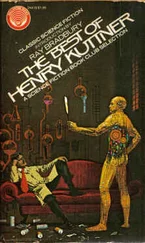Archibald Henry Sayce - Patriarchal Palestine
Здесь есть возможность читать онлайн «Archibald Henry Sayce - Patriarchal Palestine» — ознакомительный отрывок электронной книги совершенно бесплатно, а после прочтения отрывка купить полную версию. В некоторых случаях можно слушать аудио, скачать через торрент в формате fb2 и присутствует краткое содержание. Жанр: foreign_prose, История, foreign_edu, foreign_antique, на английском языке. Описание произведения, (предисловие) а так же отзывы посетителей доступны на портале библиотеки ЛибКат.
- Название:Patriarchal Palestine
- Автор:
- Жанр:
- Год:неизвестен
- ISBN:нет данных
- Рейтинг книги:5 / 5. Голосов: 1
-
Избранное:Добавить в избранное
- Отзывы:
-
Ваша оценка:
- 100
- 1
- 2
- 3
- 4
- 5
Patriarchal Palestine: краткое содержание, описание и аннотация
Предлагаем к чтению аннотацию, описание, краткое содержание или предисловие (зависит от того, что написал сам автор книги «Patriarchal Palestine»). Если вы не нашли необходимую информацию о книге — напишите в комментариях, мы постараемся отыскать её.
Patriarchal Palestine — читать онлайн ознакомительный отрывок
Ниже представлен текст книги, разбитый по страницам. Система сохранения места последней прочитанной страницы, позволяет с удобством читать онлайн бесплатно книгу «Patriarchal Palestine», без необходимости каждый раз заново искать на чём Вы остановились. Поставьте закладку, и сможете в любой момент перейти на страницу, на которой закончили чтение.
Интервал:
Закладка:
There were other names by which Palestine and Syria were known to the early Babylonians, besides the general title of "the land of the Amorites." One of these was Tidanum or Tidnum; another was Sanir or Shenir. There was yet another, the reading of which is uncertain, though it may be Khidhi or Titi.
Mr. Boscawen has pointed out a coincidence that is at least worthy of attention. The first Babylonian monarch who penetrated into the peninsula of Sinai bore a name compounded with that of the Moon-god, which thus bears witness to a special veneration for that deity. Now the name of Mount Sinai is similarly derived from that of the Babylonian Moon-god Sin. It was the high place where the god must have been adored from early times under his Babylonian name. It thus points to Babylonian influence, if not to the presence of Babylonians on the spot. Can it have been that the mountain whereon the God of Israel afterwards revealed Himself to Moses was dedicated to the Moon-god of Babylon by Naram-Sin the Chaldæn conqueror?
If such indeed were the case, it would have been more than two thousand years before the Israelitish exodus. Nabonidos, the last king of the later Babylonian empire, who had a fancy for antiquarian exploration, tells us that Naram-Sin reigned 3200 years before his own time, and therefore about 3750 B.C. The date, startlingly early as it seems to be, is indirectly confirmed by other evidence, and Assyriologists consequently have come to accept it as approximately correct.
How long Syria remained a part of the empire of Sargon of Akkad we do not know. But it must have been long enough for the elements of Babylonian culture to be introduced into it. The small stone cylinders used by the Babylonians for sealing their clay documents thus became known to the peoples of the West. More than one has been found in Syria and Cyprus which go back to the age of Sargon and Naram-Sin, while there are numerous others which are more or less barbarous attempts on the part of the natives to imitate the Babylonian originals. But the imitations prove that with the fall of Sargon's empire the use of seal-cylinders in Syria, and consequently of documents for sealing, did not disappear. That knowledge of writing, which was a characteristic of Babylonian civilization, must have been carried with it to the shores of the Mediterranean.
The seal-cylinders were engraved, sometimes with figures of men and gods, sometimes with symbols only. Very frequently lines of cuneiform writing were added, and a common formula gave the name of the owner of the seal, along with those of his father and of the deity whom he worshipped. One of the seal-cylinders found in Cyprus describes the owner as an adorer of "the god Naram-Sin." It is true that its workmanship shows it to belong to a much later date than the age of Naram-Sin himself, but the legend equally shows that the name of the conqueror of Magan was still remembered in the West. Another cylinder discovered in the Lebanon mentions "the gods of the Amorite," while a third from the same locality bears the inscription: "Multal-ili, the son of Ili-isme-anni, the worshipper of the god Nin-si-zida." The name of the god signified in the old pre-Semitic language of Chaldæa "the lord of the upright horn," while it is worth notice that the names of the owner and his father are compounded simply with the word ili or el , "god," not with the name of any special divinity. Multal-ili means "Provident is God," Ili-isme-anni, "O my God, hear me!"
Many centuries have to elapse before the monuments of Babylonia again throw light on the history of Canaan. Somewhere about B.C. 2700, a high-priest was ruling in a city of Southern Babylonia, under the suzerainty of Dungi, the king of Ur. The high-priest's name was Gudea, and his city (now called Tel-loh by the Arabs) was known as Lagas. The excavations made here by M. de Sarzec have brought to light temples and palaces, collections of clay books and carved stone statues, which go back to the early days of Babylonian history. The larger and better part of the monuments belong to Gudea, who seems to have spent most of his life in building and restoring the sanctuaries of the gods. Diorite statues of the prince are now in the Louvre, and inscriptions upon them state that the stone out of which they were made was brought from the land of Magan. On the lap of one of them is a plan of the royal palace, with the scale of measurement marked on the edge of a sort of drawing-board. Prof. Petrie has shown that the unit of measurement represented in it is the cubit of the pyramid-builders of Egypt.
The diorite of Sinai was not the only material which was imported into Babylonia for the buildings of Gudea. Beams of cedar and box were brought from Mount Amanus at the head of the Gulf of Antioch, blocks of stone were floated down the Euphrates from Barsip near Carchemish, gold-dust came from Melukhkha, the "salt" desert to the east of Egypt which the Old Testament calls Havilah; copper was conveyed from the north of Arabia, limestone from the Lebanon ("the mountains of Tidanum"), and another kind of stone from Subsalla in the mountains of the Amorite land. Before beams of wood and blocks of stone could thus be brought from the distant West, it was necessary that trade between Babylonia and the countries of the Mediterranean should have long been organized, that the roads throughout Western Asia should have been good and numerous, and that Babylonian influence should have been extended far and wide. The conquests of Sargon and Naram-Sin had borne fruit in the commerce that had followed upon them.
Once more the curtain falls, and Canaan is hidden for a while out of our sight. Babylonia has become a united kingdom with its capital and centre at Babylon. Khammurabi (B.C. 2356-2301) has succeeded in shaking off the suzerainty of Elam, in overthrowing his rival Eri-Aku, king of Larsa, with his Elamite allies, and in constituting himself sole monarch of Babylonia. His family seems to have been in part, if not wholly, of South Arabian extraction. Their names are Arabian rather than Babylonian, and the Babylonian scribes found a difficulty in transcribing them correctly. But once in the possession of the Babylonian throne, they became thoroughly national, and under Khammurabi the literary glories of the court of Sargon of Akkad revived once more.
Ammi-satana, the great-grandson of Khammurabi, calls himself king of "the land of the Amorites." Babylonia, therefore, still claimed to be paramount in Palestine. Even the name of the king is an indication of his connection with the West. Neither of the elements of which it is composed belonged to the Babylonian language. The first of them, Ammi, was explained by the Babylonian philologists as meaning "a family," but it is more probable that it represents the name of a god. We find it in the proper names both of Southern and of Northwestern Arabia. The early Minsaean inscriptions of Southern Arabia contain names like Ammi-karib, Ammi-zadiqa, and Ammi-zaduq, the last of which is identical with that of Ammi-zaduq, the son and successor of Ammi-satana. The Egyptian Sinuhit, who in the time of the twelfth dynasty fled, like Moses, for his life from the court of the Pharaoh to the Kadmonites east of the Jordan, found protection among them at the hands of their chieftain Ammu-ânshi. The Ammonites themselves were the "sons of Ammi," and in numerous Hebrew names we find that of the god. Ammi-el, Ammi-nadab, and Ammi-shaddai are mentioned in the Old Testament, the Assyrian inscriptions tell us of Ammi-nadab the king of Ammon, and it is possible that even the name of Balaam, the Aramaean seer, may be compounded with that of the god. At all events, the city of Pethor from which he came was "by the river (Euphrates) of the land of the children of Ammo," for such is the literal rendering of the Hebrew words.
Ammi-satana was not the first of his line whose authority had been acknowledged in Palestine. The inscription in which he records the fact is but a confirmation of what had been long known to us from the Book of Genesis. There we read how Chedor-laomer, the king of Elam, with the three vassal princes, Arioch of Ellasar, Amraphel of Shinar, and Tidal of Goyyim invaded Canaan, and how the kings of the vale of Siddim with its pits of asphalt became their tributaries. For thirteen years they remained submissive and then rebelled. Thereupon the Babylonian army again marched to the west. Bashan and the eastern bank of the Jordan were subjugated, the Horites in Mount Seir were smitten, and the invaders then turned back through Kadesh-barnea, overthrowing the Amalekites and the Amorites on their way. Then came the battle in the vale of Siddim, which ended in the defeat of the Canaanites, the death of the kings of Sodom and Gomorrha, and the capture of abundant booty. Among the prisoners was Lot, the nephew of Abram, and it was to effect his rescue that the patriarch armed his followers and started in pursuit of the conquerors. Near Damascus he overtook them, and falling upon them by night, recovered the spoil of Sodom as well as his "brother's son."
Читать дальшеИнтервал:
Закладка:
Похожие книги на «Patriarchal Palestine»
Представляем Вашему вниманию похожие книги на «Patriarchal Palestine» списком для выбора. Мы отобрали схожую по названию и смыслу литературу в надежде предоставить читателям больше вариантов отыскать новые, интересные, ещё непрочитанные произведения.
Обсуждение, отзывы о книге «Patriarchal Palestine» и просто собственные мнения читателей. Оставьте ваши комментарии, напишите, что Вы думаете о произведении, его смысле или главных героях. Укажите что конкретно понравилось, а что нет, и почему Вы так считаете.











